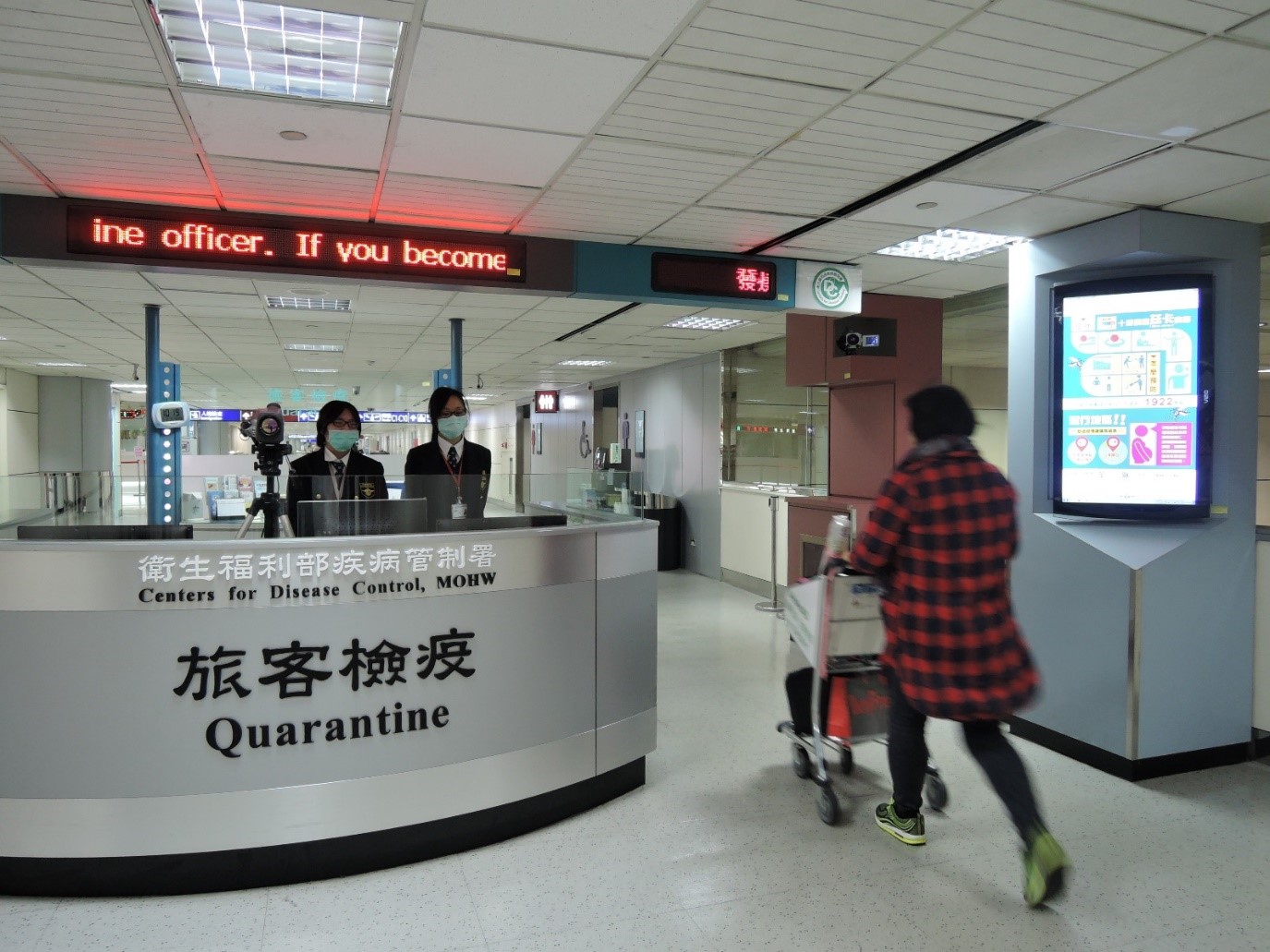Malaria
Background
Malaria is caused by Plasmodium parasites, which are transmitted via the bites of infected female Anopheles mosquitoes, principally Anopheles minimus in Taiwan. People who are infected by Plasmodium parasites typically have symptoms of malaria including high fever and flu-like illness such as shaking chills, headache, muscle aches, and tiredness.
Five species of pathogens are found in human host - Plasmodium falciparum, P. vivax, P. malariae , P. ovale and P. knowlesi. There are antimalarial drugs that can be used to treat and prevent malaria infection. For travellers, malaria can be prevented through chemoprophylaxis, which suppresses the blood stage of malaria infections, thereby preventing malaria disease. No antimalarial drug is 100% protective and must be combined with the use of personal protective measures (i.e., insect repellents, long sleeves, long pants, sleeping in a mosquito-free setting or using an insecticide-treated bednet).
Epidemiology
In the 1950s, the World Health Organization (WHO) adopted indoor residual spraying (IRS) using DDT (dichlorodiphenyltrichloroethane) to eliminate Anopheles (An.) mosquitoes; and world malaria eradication programs were initiated. Many countries in the Mediterranean region and the Americas which were using DDT in indoor residual spraying achieved remarkable effects. Taiwan implemented its malaria control and elimination program in 1946, involving a preparatory phase (1946-1951), an attack phase (1952-1957), a consolidation phase (1958-1964), and later, a maintenance phase of sustained control and prevention of malaria. In 1965, Taiwan was officially issued with the WHO Certificate of Registration for malaria elimination. To date, only a few sporadic indigenous cases along the northern coast of Taiwan in 1972, induced cases in a hospital in Taipei City in 1995, and two introduced cases in Taitung County in 2003 have been found. Since 1965, about 10 to 30 imported cases have been reported each year. Taiwan is one of the few countries which have succeeded in maintaining an excellent record in malaria elimination.

Figure: Imported malaria cases in Taiwan, 1965-2024.
Malaria Surveillance in Taiwan
- Taiwan National Infectious Disease Statistics System–Malaria
- Fever screening at international airports and seaports.
- Self–reporting through the toll–free 1922 hotline or local public health authority.

Figure: Fever screening at the Taiwan Taoyuan International Airport.
Prevention and Control
- Travel advice for passengers heading out to malarious areas:
- (1) Pregnant women and children are advised against traveling to malarious areas.
- (2) Avoid outdoor activities at dawn or dusk.
- (3) Wear long-sleeved shirts and long pants at night, use mosquito repellents, and avoid wearing dark clothing.
- (4) Stay in accommodations that come with screen doors/window screens and fitted with adequate sanitation amenities.
- (5) Sleep inside an insecticide-treated bednet. Check for any holes in the bednet, or any mosquito trapped inside the net. Use mosquito repellents in the bedroom.
- (6) Staying in an air-conditioned room reduces the probability of mosquito bites, due to the room temperature being lowered.
- (7) Follow the doctor’s instructions in taking malaria prophylaxis before visiting endemic areas, and remain on the medication throughout the stay in the area and after leaving the area.
- Recommendations for deferring blood donation:
- (1) Travelers to malaria-endemic areas should not donate blood for 3 months after travel.
- (2) Former residents defined as a continuous stay of longer than 5 years of malaria-endemic areas may not donate blood for 3 years after departure. Upon return to a malaria-endemic area within that 3-year period, blood donation should be deferred for an additional 3 years.
- (3) People diagnosed with malaria may not donate blood for 3 years after treatment.
- The strategies of malaria elimination in Taiwan:
- (1) Survey of vector mosquitoes (An. minimus): An. minimus is distributed in 29 townships across 5 cities/counties.
- (2) Providing anti-malarial agents to travelers for chemo-prophylaxis before they visit malarious areas.
- (3) Fever screen of passengers arriving from malarious areas in the international airports.
- (4) Diagnosis, treatment and follow-up of malaria patients.
FAQs
- What is Malaria?
- Malaria is a serious and sometimes fatal disease caused by Plasmodium parasites that commonly infect a certain type of mosquito which feeds on humans. People who get malaria have symptoms including high fever and flu-like illness such as shaking chills, headache, muscle aches, and tiredness. Five species of malaria parasites are Plasmodium falciparum, P. vivax, P. ovale, P. malariae and P. knowlesi.
- How is malaria transmitted?
- The pathogen of malaria is Plasmodium which is transmitted only via the bites of infected female Anopheles mosquitoes. Anopheles mosquitoes must have been infected through a previous blood meal taken from an infected person. After 1 week, the infected mosquito takes its blood meal and transmits the parasites that mix with the mosquito's saliva to the healthy person.
- Who is at risk for malaria?
- Anyone can get malaria. Most cases occur in people who live in malarious areas. People from non-malarious areas could be infected when they travel to malarious areas or through a blood transfusion (although this is very rare). Also, mother to child transmission before or during delivery could also occur. In malarious areas, the longer the stay, the higher the risk of contracting malaria.
- What are the signs and symptoms of malaria?
- Symptoms include fever and flu-like illness, including shaking chills, headache, muscle pain, tenderness, cough, and tiredness. Nausea, vomiting, and diarrhea may also occur. Malaria may cause anemia and jaundice (yellow coloring of the skin and eyes) because of the loss of red blood cells. If not promptly treated, the infection can become severe and may cause kidney failure, seizures, mental confusion, coma, and death. Symptoms usually appear between 7 and 30 days after the mosquito bite.
- How do I know if I have malaria?
- Plasmodium parasites can be identified by examining a drop of your blood, spread out as a "blood smear" on a microscope slide under the microscope. If you are sick and there is any suspicion of malaria (for example, if you have recently traveled in the malarious areas), the test should be performed without delay.
- Isn't there a malaria vaccine?
- Malaria vaccines has been used among children living in regions with malaria transmission in Africa. There is currently no malaria vaccine approved in Taiwan.
More Information
- WHO|Malaria
- USA CDC|Malaria
- GOV.UK|Malaria: guidance, data and analysis
Images




